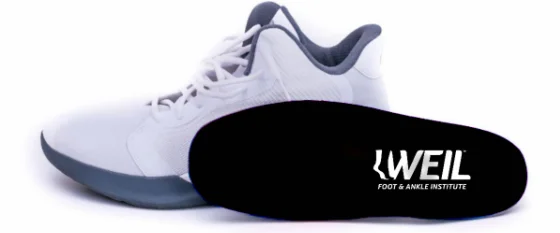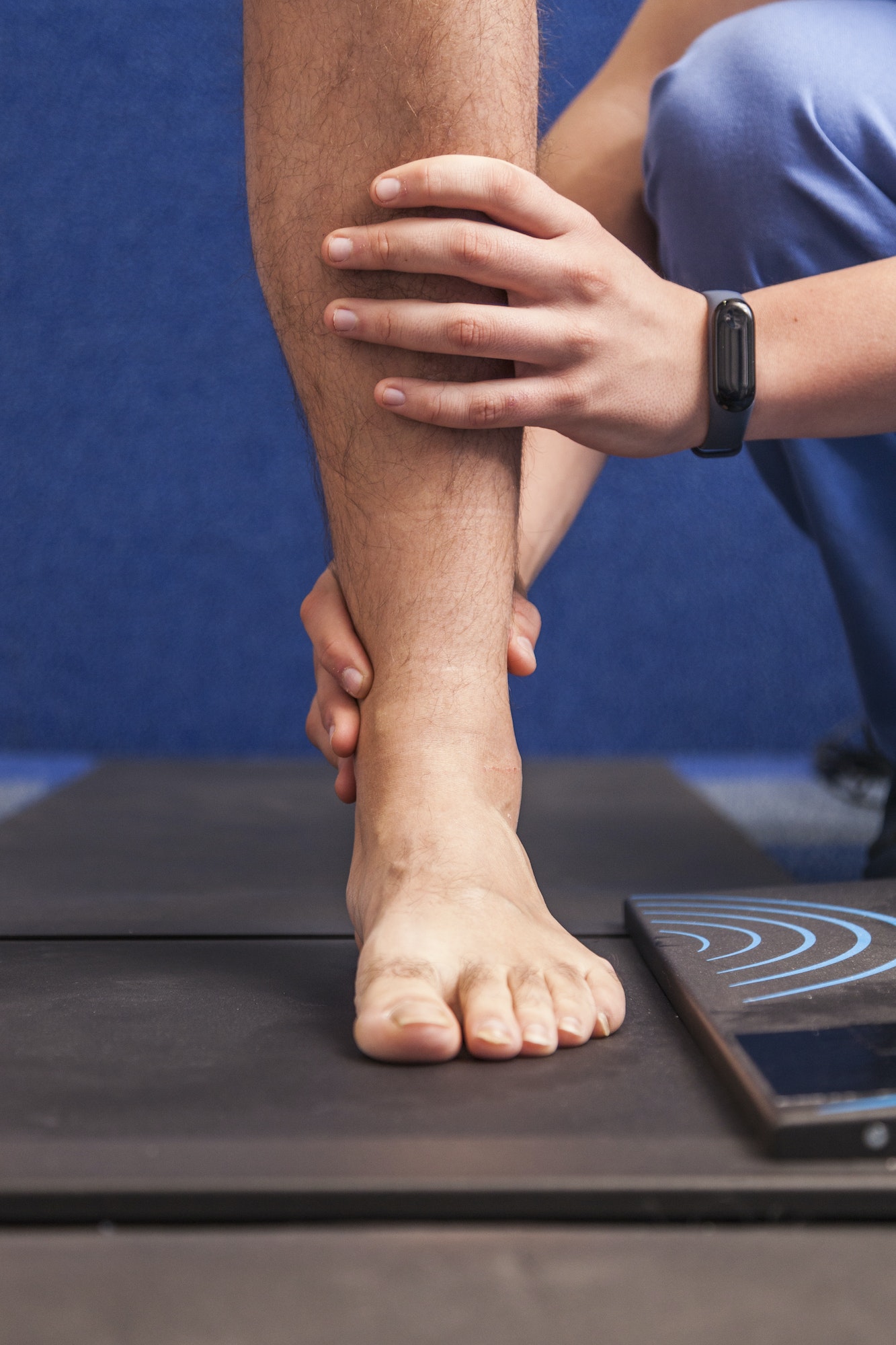Table of Contents
 You have likely seen pamphlets or signs for custom orthotics if you have been inside any podiatrist’s office. Your doctor may have even recommended them for you. You might have wondered, “Why should I get custom orthotics – especially if I’m already purchasing quality shoes?”
You have likely seen pamphlets or signs for custom orthotics if you have been inside any podiatrist’s office. Your doctor may have even recommended them for you. You might have wondered, “Why should I get custom orthotics – especially if I’m already purchasing quality shoes?”
That’s a question many people have, and we have answers for you!
Shoes Don’t Provide Custom Support
Your shoes are not built to support your feet specifically. They are built to support the average person’s feet. Our feet – our foundation – are vital to our overall health and wellbeing, and custom orthotics play an important role in that. They are molded specifically to your feet’s contours and dimensions, and most importantly, to meet your body’s particular needs. Orthotics help ensure optimal foot health and that the body is properly aligned for your daily activities.
Your next thought may be, “I don’t need one. My shoe already has an insert.”
Yes, it does. However, if you take the insert out of the shoe, you’ll discover that it is one step away from being able to do origami. That’s not the type of support your foot – specifically your arch – needs. If you can easily bend a shoe insert in half or roll it up, that particular insert is not up for the task of supporting your foot’s specific needs. A quality shoe is a great start for proper foot health, and custom orthotics can take you to the next level.
Whether you have flat feet, high arches, or in between, your arch will still begin to collapse with age and wear. A quality shoe plus a custom orthotic is the winning combination that your feet and your arches are craving.
Every Foot Can Benefit from Orthotics
Whether you are pain-free, new to foot or ankle pain, or have a foot deformity, every foot can benefit from custom orthotics. Orthotics’ primary goal is to improve foot structure by ensuring that your foot, bones, and joints are in an optimized position. This reduces the stress on the foot and provides relief to those who experience foot, ankle, hip, or knee pain. Prime candidates for orthotics also include those who are active, participate in sports, or are on their feet for extended periods of time.
Additionally, custom orthotics can help prevent people of all ages from developing future lower extremity issues. Wearing orthotics can reduce the risk of foot and ankle injuries, plantar fasciitis, or Achilles tendinitis. These devices are also capable of improving foot structure – sometimes even being able to eliminate the need to reconstruct or perform surgery on the foot.
Custom orthotics are designed to redistribute the body weight across the entire foot and control motion in the mid arch and the joint below the ankle. As such, these devices are particularly important to treat:
- Achilles Tendon Pain
- Bunions
- Flat Feet
- High Arched Foot (Cavus Foot)
- Hallux Rigidus/Limitus
- Medial Knee Pain (Runner’s knee)
- Metatarsalgia
- Plantar Fasciitis
- Sesamoiditis
- Shin Splints
- Back pain
- Ingrown toenails
Custom orthotics are the more aggressive form of conservative treatment for musculoskeletal conditions in the feet. They are critical in avoiding future flare-ups of pain and can even prevent ingrown toenails. A foot that is not in an optimized position can roll and put pressure on the toenail, eventually leading to an ingrown nail.
Even if nothing on the aforementioned list is a problem for you at the moment, that is likely to change as you get older. The more proactive you can be now will help you out in the long run!
A Tool for Every Generation
There is a general assumption that orthotics of any kind are just for the older population. However, orthotics are greatly versatile, and the majority of people (children included!) can benefit from having custom orthotics.
Yes, they are helpful for those who exclaim, “Oh, my knees!” when getting up from the couch. They can also…
- Help athletes achieve their optimal performance
- Improve posture by helping the body align properly
- Prevent injuries
- Reduce excessive pronation or supination
- Help those who are bow-legged or knock-kneed
- Lower the risk of chronic foot problems
Whatever your podiatric need or health goal, custom orthotics can help! Talk to your board-certified podiatrist on how you or your loved ones can benefit from custom inserts.
Orthotics as a Post-Surgery Tool
Custom orthotics also play an integral role in helping patients recover from surgeries of any kind. After recovering from surgery, custom orthotics continue the healing process. They are built to keep the feet in the optimal position to prevent further injury or worse, recurrence.
Those who suffer from bunions or hammertoes greatly benefit from custom orthotics during post-reconstruction to improve their foot mechanics and prevent recurrence. They are also used for those who require reconstruction due to plantar fasciitis, Achilles tendon problems, or flat feet. Maintaining the optimal configuration, like custom orthotics do, is necessary to prevent further pain and to allow the bones to heal correctly. Those who skip custom orthotics in their recovery process may soon encounter pain while standing or walking or problems with their knees, hips, or lower back.
Our goal is to find the best orthotics for your feet to help take the burden of proper recovery off your shoulders and slip it into your shoes instead.
Custom Orthotics are Highly Tailored
The best part about custom orthotics is that they are just that – customized. Custom orthotics are electronically scanned images or physical impressions of your foot to ensure accuracy. They also can be modified in a variety of ways to best match your body’s needs and activity level.
There are several different types of orthotics – accommodating, functional, functional-hybrid – and one of our board-certified podiatrists can help assess which is the best fit for you. Feet are not one size fits all; that’s why custom orthotics are such a valuable tool!
For those who worry the orthotic will be too hard, further customizations such as top-covers or padding can help provide the cushion you desire.
Types of Orthotics
Orthotics come in many different shapes and sizes and can be made from different types of materials. The purpose of a custom orthotic is for it to match your specific needs. Some orthotics may be rigid or functional, while others are soft and accommodative.
- Functional or Rigid Orthotics: The functional orthotic device is rigid and designed to balance the foot and control function. These orthotics are made to ease foot aches and strains, and they’re made from harder materials like polypropylene plastic or carbon fiber. They are used primarily for walking, running, or work shoes. Such orthotics are made from a plaster cast of the foot.
- Accommodative or Soft Orthotics: Soft orthotics are devices used to reduce high pressure areas on the foot by absorbing shock and redistributing the pressure across the whole foot. These devices are commonly prescribed for rigid feet that cannot be realigned with a functional device. They are also used for diabetic feet that are prone to ulcers and sores. Since these devices are shock absorbing by design and are less durable, they will need to be replaced more frequently than functional orthotics. This type of orthotic is typically made from soft, compression materials.
- Functional-Hybrid Orthotics: In some instances, patients may require the benefits of both soft and rigid orthotics. Functional-hybrid orthotics have the best of both types of orthotics built-in: an accommodating and shock absorbing top cover with a stabilizing shell to provide correction.
Our board-certified podiatrists will perform a clinical evaluation to determine which type of orthotic can best help your foot condition. They’ll also consider the types of shoes you normally wear. This Goldilocks process ensures that you find a custom orthotic that is “just right.”
Customized versus Over-the-Counter Orthotics
Every drug store seems to have a whole wall or section dedicated to over-the-counter orthotics these days. It’s important to note that the effectiveness of over-the-counter insoles is significantly less than that of custom orthotics. It is similar to purchasing a pair of glasses. You can get simple reading glasses from the drug store. However, a pair of custom glasses based on an eye exam by a certified doctor will be substantially better in the short- and long-term.
Additionally, your provider can make routine adjustments to your custom orthotics to best meet your needs and comfort level. With an over-the-counter insert, there is no wiggle room. What you get is what you get, and no improvements can be made to best support the unique needs of your feet.
If you have a need for something in between, we also offer medical-grade arch supports. Our Weil Foot and Ankle arch supports are made of higher-quality materials than what is typically found in pharmacies or box stores. They are better-constructed and are a podiatry-approved alternative, if you aren’t ready to make the leap to the best option for your feet: Custom orthotics.
Introducing Orthotics to Your Feet
Did you know that you have to slowly introduce your feet to your custom orthotics? It’s true! It is normal for there to be an adjustment period. Your feet may experience some discomfort as they get used to all their new support for up to three weeks. Rest assured that this discomfort is only temporary. Once your feet adjust, you’ll never want to go back to shoes without orthotics.
When you transition to custom orthotics, it’s best to adhere to the following tips:
- Ease into them! Start wearing your orthotics for one hour the first day, then increase your wear time by one hour per day until you are wearing them for eight hours.
- Do not exercise or do high-intensity activities until you have fully acclimated to them.
- Should you need to clean your orthotics, do so with warm (not hot) soapy water.
- Always take your orthotics with you when you go to purchase new shoes. This will make sure they’ll fit properly!
As you introduce your feet to their new orthotics, realize that the transition period varies per person. If you are experiencing more pain than discomfort, go back to only wearing them for a few hours at a time to help your feet acclimate. If after the three-week break-in period you are still experiencing pain, don’t hesitate to call our office. We will work with you to make sure your feet are happy with their orthotics!
We’re Here to Help!
If you have seen the light and discovered that custom orthotics are on your journey to better foot and overall health, our office is here to assist you! We will not only make sure your custom orthotics are the best match for your feet, we will give you all the tips and tricks you need to make the transition to orthotics a seamless one. Additionally, most insurance companies cover the cost of orthotics, so it’s not a strain on your wallet either.
Contact your local office to learn more!
FAQs

Meet Weil Foot & Ankle Institute
By: Weil Foot & Ankle Institute, Published: June 10th, 2024
Review By: Lowell Weil, DPM – June 10th, 2024


